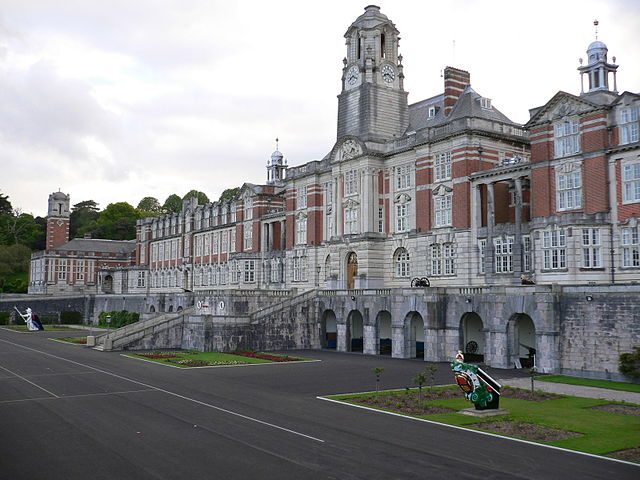The Naval Defence Act 1889 was an act of the Parliament of the United Kingdom. It received royal assent on 31 May 1889 and formally adopted the "two-power standard" and increased the United Kingdom's naval strength. The standard called for the Royal Navy to maintain a number of battleships at least equal to the combined strength of the next two largest navies in the world, which then were France and Russia. An extra £20 million over the following four years were provided for ten new battleships, thirty-eight new cruisers, eighteen new torpedo boats and four new fast gunboats. The two-power standard was maintained until disarmament began during the interwar period.
The battleship HMS Royal Sovereign
The Royal Navy (RN) is the naval warfare force of the United Kingdom, British Overseas Territories and Crown Dependencies, and a component of His Majesty's Naval Service. Although warships were used by English and Scottish kings from the early medieval period, the first major maritime engagements were fought in the Hundred Years' War against France. The modern Royal Navy traces its origins to the early 16th century; the oldest of the UK's armed services, it is consequently known as the Senior Service.
A late 16th-century portrait of the Spanish Armada battling Royal Navy warships
HMS Victory, Nelson's flagship at Trafalgar, is still a commissioned Royal Navy ship, although she is now permanently kept in dry-dock.
HMS Warspite and Malaya, seen from Valiant at the Battle of Jutland
Britannia Royal Naval College in Dartmouth, Devon





